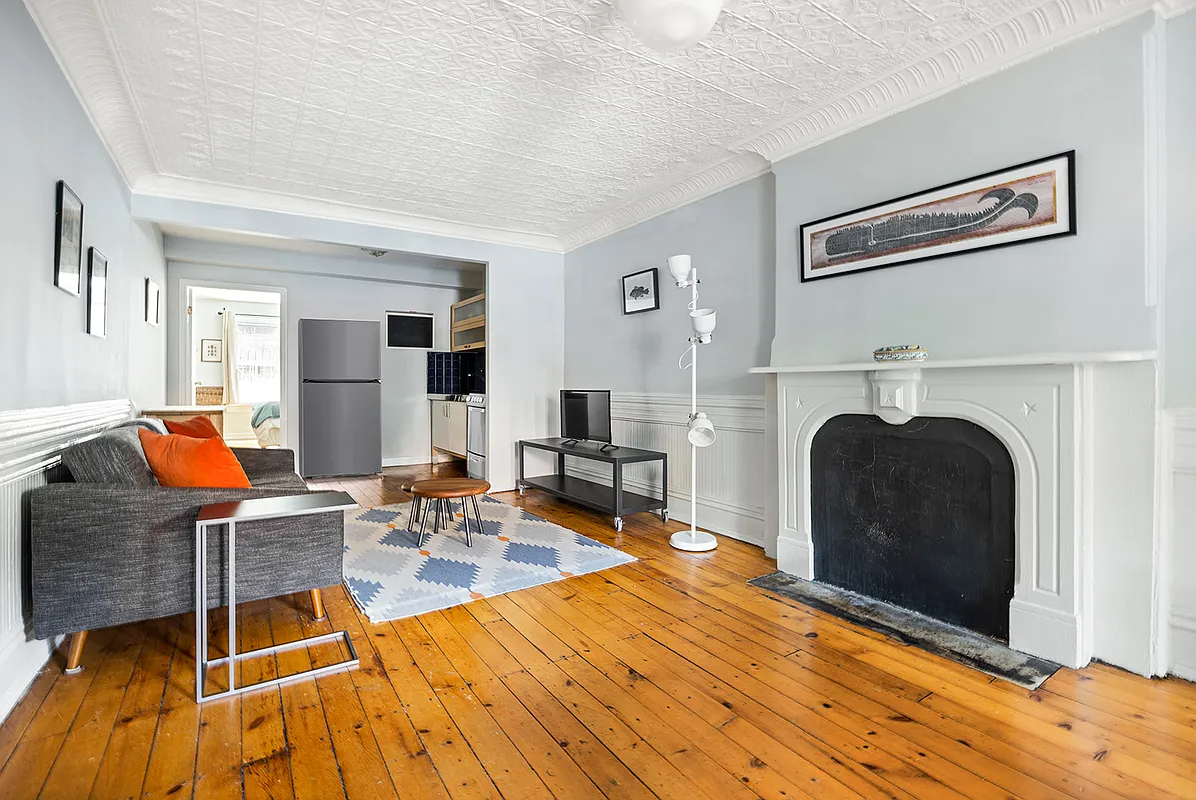The Failure of Metrotech, Eminent Domain and All
In the latest issue of urban-planning mag City Journal, writer Nicole Gelinas examines the role of eminent domain in the creation and destruction of cities. In the process, she looks back on the failed experiment known as Metrotech: Nearly two decades ago, Gotham decided to build a walled camp in the middle of a lower-class…

 In the latest issue of urban-planning mag City Journal, writer Nicole Gelinas examines the role of eminent domain in the creation and destruction of cities. In the process, she looks back on the failed experiment known as Metrotech:
In the latest issue of urban-planning mag City Journal, writer Nicole Gelinas examines the role of eminent domain in the creation and destruction of cities. In the process, she looks back on the failed experiment known as Metrotech:
Nearly two decades ago, Gotham decided to build a walled camp in the middle of a lower-class area of Brooklyn to lock white-collar jobs in. This project would accomplish two goals, pols thought. In addition to keeping jobs in New York, Metrotech would spark further development in a slummy neighborhood that never had grown on its own, despite its proximity to lower Manhattan. City and state officials used eminent domain to displace 250 owners and tenants so that developer Bruce Ratner could build the suburban-style office campus.
Metrotech tenants have received about $270 million in state and city subsidies (of which more than $200 million went to JPMorgan Chase). But Metrotech hasn’t kept the nation’s financial-services jobs in New York…Nor has Metrotech, completely cut off from the surrounding streetscape, encouraged the growth of an unsubsidized business community in its neighborhood. Metrotech is what it was when it opened: a suburban-style office campus carved out of inner-city downtown Brooklyn.
We actually don’t know that much about Metrotech–does everyone agree that it is an unmitigated disaster?
Taking Away Your Property for What? [City Journal]
4 Metrotech Center Photo [Scott Murphy]





BTW, the “huge building with the green roof on Cadman Plaza” pre-dates Metrotech and has nothing to do with it. It is in Brooklyn Heights, not downtown. Morgan Stanley built it and in order to be allowed to do so they did a complete renovation of the adjoining Brooklyn Business Library.
And the only “statistics” I have to back up my statement that most Metrotech workers do not live in Brooklyn comes from a friend who works there (for Keyspan) and has commented that most of the people he works with and most of the other people he knows who work there live on LI — not surprising, since it is a LI company (successor in part to LILCO).
I also know someone who bought a loft in the Toy Factory and, while she loves her apartment, she says the neighborhood is desolate and gross because of the projects on one side and Metrotech on the other, which she describes as a scary wasteland after 5 pm.
Metrotech doesn’t seem to have created many new jobs and appears to have employed only a tiny handful of low-skilled locals, but it has almost certainly prevented a number of jobs from leaving the city. Like Puca, I recommend everyone look at the City Limits article. One of the stats that really jumped out to me is that Bear Stearns spent $2 million over 10 years on a training program that netted only 50 local hires. That’s $40 grand per job.
In terms of how the development is knit into the fabric of the neighborhood it belongs to, or in this case NOT knit, Metrotech looks like a textbook case of urban planning at its worst. And this is what so many people fear the proposed Atlantic Yards development. It’s a huge project that divides Prospect Heights from Fort Greene, overcrowds the subway system, is likely to create traffic chaos, and leaves the city to pay for massive infrastructure improvements to schools, hospitals, streets, sewers, police, etc, etc, all while handing over extraordinary tax breaks to the developer. I’ve seen and applauded many radical redevelopment projects in cities like London, Hamburg, Glasgow, Newcastle, Rotterdam etc but I’ve never understood why Americans are so quick to embrace development for its own sake before considering factors like context, sustainability, the appropriate balance of public v private funding, community involvement etc. It’s a helluva thing to observe and try to participate in. So far it doesn’t make me feel good about the democratic process in this town.
Nicole Gelinas is a result-oriented idiot who doesn’t care about the facts, logic, or history and simply wants to spout vitriol to support her own political agenda. She would rather have urban decay (few remember what that area was like 25-30 years ago when people literally would avoid the neighborhood for fear of their lives) instead of steady jobs, urban stablization, which now has contributed to the rennaisance of surrounding neighborhoods. Sure, Gov’t needs to be cognizant of the small guy, but it is also charged with the big picture of strengthening the city for all (business, workers, etc.). If Nicole had her way, we would be in the pre-industrial age, with no roads, no corporations, and each individual would be hunting their own food.
Puca
– living in building full of million dollar condos (of course low real-estate taxes through tax-abatement, developed by Boymelgreen (HQ in NewsWalks) – a developer striving to become the next residental Ratner)
– working for ICAP (www.icap.com) ==> the world largest interbroker dealer ==> Wall Street => do I hear bonus next?
cares for the unemployed in the projects!! How noble!!
How many jobs candidates did ICAP recently interview residing in any project in the city?
How many McDonalds and KFC need to build to fulfill the promises for local employment?
I have full understanding for your concerns about Atlantic Yards esp. if I would have the prospect of having to live next to the biggest construction site for years to come in NYC apart ground zero.
The bad way you come across (not only here – remember southsouthtslope.com?) is only shadowed by the economic success of MetroTech, and the failed architecture of MetroTech.
If you want influence the public on Atlantic Yards, better refrain from posting and hire a PR person instead…..
BTW Puca what about you ducking my questions???
BTW Puca what about you ducking my questions???
Puca – 1st I seriously doubt your statistics – but even if true – just because one housing project has high unemployement doesnt mean that a significant % of the 22,000 employees of Metrotech arent local. 2nd – I cant say that any improvements in downtown brooklyn (except the Metrotech buildings themselves) are a direct result of it being built because economics dont work that way (i.e. Patois on Smith doesnt file an “Im opening and thriving b/c of Metrotech affidavit) BUT by the same token Downtown Brooklyn and the immediate surrounding nabes have thrived in the past decade and you cant say that Metrotech had no effect or that it all would have happened anyway.
Anon 3:10PM LOVE your comment re: tax abatements at Newswalk – b/c of course Puca is getting a tax abatement to live in his/her million dollar (organically developed???) condo
Roz no I dont have any relationship with FCR
People (like me — here for 22 years) were spending money to live in downtown Brooklyn before Metrotech — for the same reason they were spending money to live in PH behore the Atlantic Yards announcement. Because there were buildings with space convenient to transportation at prices less than Manhattan (SOHO, Tribeca – the nabes where we would have lived). And BH was gentrified long before MetroTech by folks who were priced out of the Slope — the ones now who are going to Sunset Park etc.
And office parks may be dead at night and weekends but this is not in the midddle of the exurbs — this is NYC! Designing — and managing large sections of real estate with that idea –is just wrong for NYC.
David: Do you work for Forest City Ratner or have any relationship with FCR?